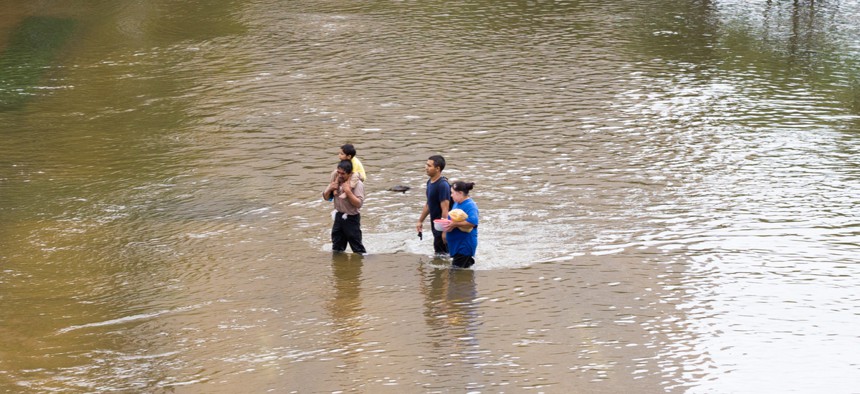While Harvey’s Floodwaters Have Receded, the Health Risks Linger

A flooded neighborhood in Houston following Hurricane Harvey Shutterstock
From overwhelmed sewage infrastructure to inundated industrial sites, the disaster’s impacts loom weeks after the record-setting storm left Texas.
Millions of residents in Hurricane Harvey’s flood recovery zone in southeastern Texas continue to face uncertain health threats from bacteria and toxins stirred up and left behind by the storm. Polluted standing water festers and sediment spreads indoors and outdoors, over living room furniture and kitchen counters and across front yards and playgrounds.
Reports from the region, including Houston, underline growing frustration in pinning down the nature and gravity of the threat.
As has been widely reported, untreated sewage spread far and wide across the region as Harvey’s record-shattering rains flooded low-lying areas and overwhelmed sewers and other water treatment infrastructure.
Add to that the fact that at least a dozen Superfund sites in the Houston area were overrun by the storm waters and, as the Associated Press reported Sunday, the U.S. Environmental Protection Agency quietly reported on Friday that it had recovered 517 containers of “unidentified, potentially hazardous material” from highly contaminated toxic waste sites flooded by the hurricane.
AP reporters working the story over the weekend, however, received no elaboration from the agency and were left guessing where the containers might have come from and what kind of material they might have leaked and where.
Citing earlier reports, the AP listed possible sources that included the U.S. Oil Recovery Superfund site, “a former petroleum waste processing plant outside Houston contaminated with a dangerous brew of cancer-causing chemicals.”
They also pointed to the Harvey-flooded San Jacinto River Waste Pits Superfund, a former paper mill located on a low-lying island that at one time contained “dangerous levels of dioxins and other long-lasting toxins linked to birth defects and cancer.”
Houston reporters have been concerned about water quality in the city for weeks.
“We all had concerns about how gross the water is,” wrote Ted Oberg at Houston’s ABC affiliate KTRK-TV.
Oberg and his news team “hit the road” last week to collect water from around the city and then had it tested. Lab results demonstrated that water from Houston’s Memorial neighborhood and the nearby city of Katy still contained “substantial levels of E. Coli and fecal coliform… concrete evidence of fecal germs,” as Oberg put it.
Results on chemical contaminants were less clear.
“We could smell chemicals in the area of some of our tests, but when we sent the standing water on your streets and flowing into your homes to the lab, tests found no reportable levels of hydrocarbons, volatile organic compound or petroleum by-products.”
Rice University chemist Dr. Qilin Li told Oberg that the results made sense.
There was so much rain, he explained, that the chemicals would have been fairly well diluted in the flood waters and that, because petroleum products like gasoline are lighter than water, they would rise to the surface and evaporate.
Indeed, determining the quality of the region’s air is the target of a project launched by Oregon State University researchers this week. The scientists are passing out bracelets that monitor chemical exposure for residents of some impacted neighborhoods to wear for a week.
John Tomasic is a journalist based in Seattle.
NEXT STORY: When Local Council Members Test the Limits of Their Authority





